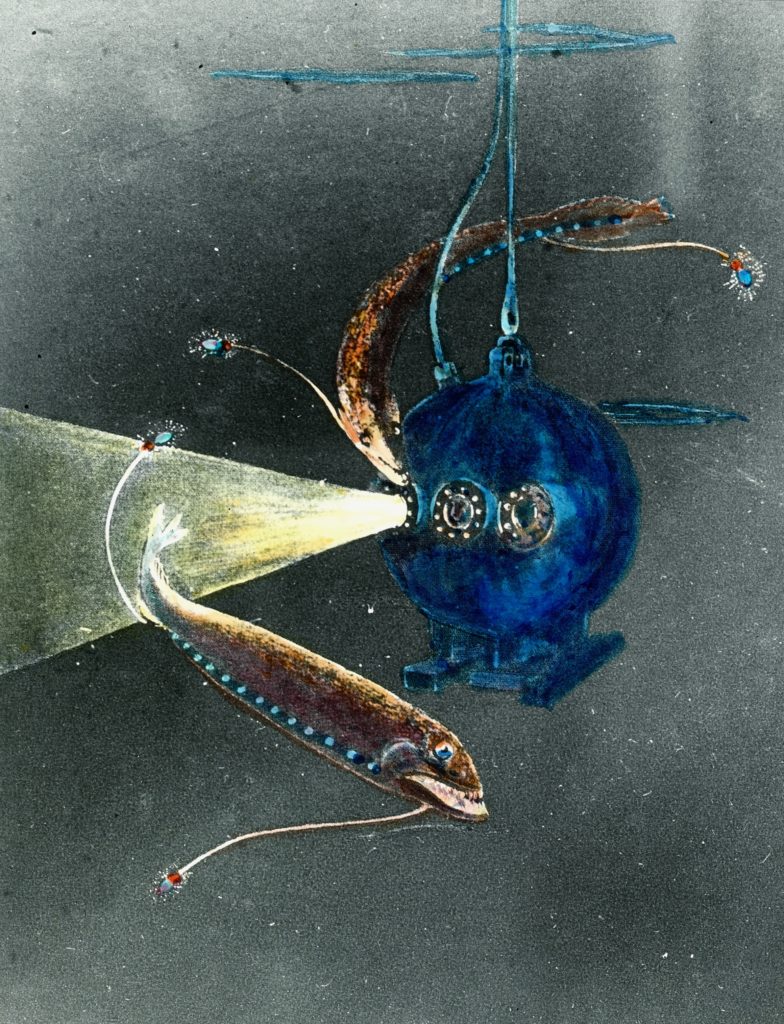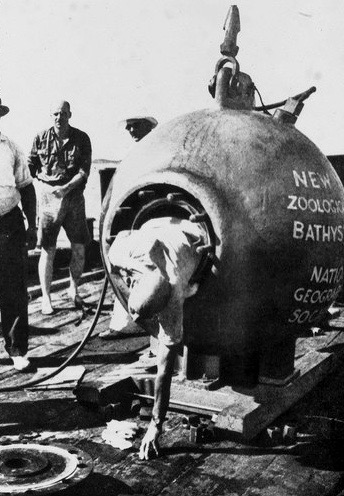This is the 15th in a series of articles that celebrate the lives of the Nobel Prize laureates whose names grace the 130+ streets of Laureate Park. These laureates are extraordinary individuals, who through their lifetime achievements have made our daily lives immeasurably richer, often in ways not readily evident.

Oddities abound in our neighborhood. As one example, would it surprise you to learn that not every laureate in Laureate Park is actually, well, a laureate? Among our neighborhood’s 130+ streets, a handful honor the lifework of people who never won a Nobel Prize. How these few individuals were fingered for this rare privilege shall remain locked, we surmise, deep within the vaults at the Tavistock Corporation, the firm that designed and now manages our Lake Nona community. But these few who failed to gain a Nobel Prize may have achieved accomplishments of greater weight than those of many a bona fide Nobel laureate. One such man was the larger-than-life naturalist, explorer, and author William Beebe, the buddy of Teddy Roosevelt and pal to numberless 20th-century celebrities, including Walt Disney.
Sifting through dusky webs of childhood memories, I dimly recall reading a Scholastic book about Beebe’s plunge into the depths of the sea in the bathysphere, a thrilling adventure story for young readers. The substance of books read in childhood, however, tends to thinness, and a child might understandably assume that William Beebe’s sole lifetime achievement consisted in those brave ocean descents in a small cast-iron sphere. An adult looking into Beebe’s lifework, though, discovers an extraordinarily gifted naturalist whose insatiable hunger for knowledge extended to all living things that fly, swim, walk, or crawl.
Growing up in Orange, New Jersey, in the 1880s, Beebe developed such a fascination for bugs and birds that he would catch and stuff (birds) or catch and pin (insects), a passion his parents actively nurtured. At a young age, Beebe already emulated the ranks of 19th-century naturalists, whose single-minded goal was to collect and categorize, slotting accumulated specimens into an ever-expanding catalogue of known species. Little thought was reserved for observing the creatures interacting in their native habitat.

Prodded by his professor and mentor at Columbia University, Henry Fairfield Osborn, Beebe secured a position in late 1899 as assistant curator of birds at the newly inaugurated Bronx Zoological Park, the brainchild of Teddy Roosevelt and several of his wealthy associates. Osborn, aware of Beebe’s skills as an ornithologist, had given him a choice: complete the degree at Columbia or take the job at the zoo. Opting for the latter, Beebe poured his inexhaustible energy into furnishing his new domain, the zoo’s birdhouse, which featured his innovative, football field-sized “flying cage” to house its avian residents. Employment at the Bronx Zoo was to anchor Beebe’s professional life for the next half-century. (Beebe luckily avoided contagion with Osborn’s opinions on race, views that have gained renewed scrutiny this year in the context of the Black Lives Matter movement.)
In 1902, Beebe married a Virginian belle, Mary Blair Rice, an accomplished biologist herself, and the newlyweds were soon making scientific expeditions, courtesy of the zoo, to such destinations as the Florida Keys, Virginia’s Barrier Islands, and Mexico, trips the couple regarded as bonus honeymoons. The last of these netted Beebe’s first book, Two Bird Lovers in Mexico, co-written with Blair. By his mid-twenties, Beebe’s copious contributions to scientific journals and popular magazines of the day had made him a national celebrity.
This growing fame and stature among serious scientists attracted the attention of New Jersey industrialist Anthony Kuser, who in 1909 offered to bankroll a 17-month-long, round-the-world expedition during which Beebe would collect live specimens of known species of pheasants while documenting their habits. The results of this superhuman effort were to be compiled into an exhaustive, four-volume monograph on these fowls. The expedition, launched the following year, took Beebe and Blair across the Atlantic, through the Suez Canal to Ceylon, where their daunting assignment to capture pheasants began in earnest, then onward through India, Indonesia, Singapore, Borneo, Burma, Malaya, China, and Japan before crossing the Pacific homeward to San Francisco.
Some speculate that during these exhausting travels, Beebe suffered a nervous breakdown, fraying his marriage. In any event, Blair shocked her husband in early 1913 by moving to Reno, Nevada, to file for divorce on the grounds of “extreme cruelty.” Obtaining the divorce eight months later, Blair remarried the week following.

The breakup caused Beebe severe psychological turmoil for a year or so, but by 1915, he had reengaged his energies in work to establish a biological research station at Kalacoon, British Guiana. (He later set up similar stations in Venezuela and Trinidad.) At Kalacoon, Beebe’s observations underwent a critical shift: Rather than simply collect independent specimens of species under study, he focused on small areas of the jungle, of an acre or so, to analyze how living things interact within an ecosystem. Thus, an ecologist was bred.
Arguably the apex of Beebe’s career came in the early 1930s as the lanky naturalist and his engineer-inventor companion, Otis Barton, crammed themselves into the four-and-a-half-foot-wide iron bathysphere off the coast of Bermuda for 35 dives beneath the waves. The deepest of these dives reached 3,028 feet below sea level. The purpose of the dives, some of which were carried live on radio for worldwide audiences, was to observe, for the first time, marine life in its natural habitat at depths never before attained. Many now regard these descents by Beebe and Barton as the “moonshots” of the early 20th century.
Luckless in marriage (he lived apart from his second wife, the much younger author Elswyth Thane, for decades), the otherwise charming William Beebe left behind a rich legacy of scientific accomplishment, a score of important books, and several female mentees who pursued renowned scientific careers of their own. The arc of Beebe’s celebrity nevertheless causes one to ponder the impermanence of fame. Once regarded with a degree of hero-worship we directed decades later toward Neil Armstrong, Beebe seems now nearly forgotten. The name of a street in a quiet Central Florida neighborhood may be of little import, just a small nod to the attainments of a man of real consequence. But could that small gesture someday reignite a genuine interest in the life of our first true ecologist?
Next month: Rabindranath Tagore, Polymath of India
Photos Courtesy of Wikimedia Commons


